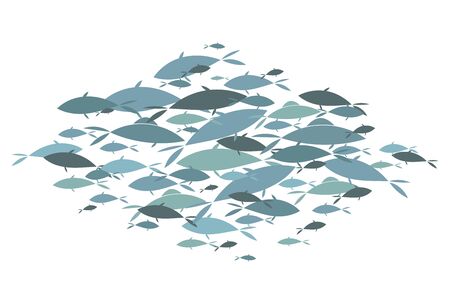Introduction to Aquarium Medicine
Aquarium medicine is an evolving field that plays a crucial role in maintaining the health and well-being of fish across various settings, including private homes, commercial breeding facilities, and public aquariums throughout the United States. As Americans increasingly value aquatic pets and invest in elaborate home aquariums, the demand for specialized veterinary care has surged. Additionally, public aquariums serve not only as entertainment venues but also as centers for education and conservation, further highlighting the significance of expert fish health management. The scope of aquarium medicine now extends far beyond basic disease treatment; it encompasses preventive care, advanced diagnostics, nutrition, biosecurity, and environmental monitoring. With advances in science and technology, aquarium medicine is helping ensure vibrant aquatic displays while supporting responsible stewardship of aquatic life. This growing field demonstrates how innovation is transforming the way we care for both ornamental and commercially valuable fish species in the U.S.
2. Cutting-edge Diagnostic Tools
Modern aquarium medicine is rapidly evolving, thanks to the integration of innovative diagnostic tools that support early detection and effective treatment of fish diseases. Today, veterinarians and aquarists in the United States are embracing advanced imaging technologies, molecular diagnostics, and real-time water quality monitoring systems to safeguard aquatic health.
Advanced Imaging Techniques
High-resolution imaging—such as digital X-rays, ultrasound, and endoscopy—has revolutionized the way professionals assess fish health. These non-invasive methods allow for detailed visualization of internal organs and structures, making it possible to diagnose issues like tumors, swim bladder disorders, and skeletal abnormalities without causing unnecessary stress to the animals.
Molecular Diagnostics
The adoption of molecular diagnostic tools—including PCR (polymerase chain reaction) testing and DNA sequencing—enables rapid identification of pathogens that may not be visible through traditional microscopy. These techniques are crucial for detecting viruses, bacteria, and parasites at an early stage, facilitating targeted treatments before outbreaks can spread.
Real-Time Water Quality Monitoring
Maintaining optimal water conditions is fundamental to fish health. New smart sensors and automated monitoring systems now provide real-time data on key parameters such as pH, ammonia, nitrite, nitrate, dissolved oxygen, and temperature. With these advances, aquarium staff can quickly respond to environmental changes that might otherwise go unnoticed.
Comparison of Diagnostic Tools
| Diagnostic Tool | Main Application | Advantages | Common Use in U.S. Aquariums |
|---|---|---|---|
| Digital Imaging (X-ray/Ultrasound) | Internal assessment of organs/tissues | Non-invasive, fast results | Routine health checks; injury diagnosis |
| Molecular Diagnostics (PCR/DNA) | Pathogen identification | Highly sensitive; early detection | Disease outbreak prevention/control |
| Water Quality Monitors | Aquatic environment monitoring | Continuous tracking; quick alerts | Aquarium management & maintenance |
The Future of Fish Health Management
The integration of these cutting-edge diagnostic tools represents a major leap forward for aquarium medicine across the U.S. By combining technology with expert care, aquarists are better equipped than ever to promote the wellbeing of their aquatic residents and ensure thriving aquarium environments.

3. Preventive Care and Wellness
In the evolving field of aquarium medicine, preventive care and wellness strategies are taking center stage among American hobbyists and professionals alike. Today’s approach goes beyond treating illness—it focuses on keeping fish healthy from the start, mirroring trends in human and veterinary medicine. One of the most significant advances is optimized nutrition. Research-backed, species-specific diets have replaced generic fish food, ensuring that aquatic pets receive balanced vitamins, minerals, and essential fatty acids. Many American aquarists now consult with aquatic veterinarians or use nutrition calculators to tailor feeding regimens for their fish, promoting resilience against disease and enhancing overall vitality.
Vaccination Programs: Proactive Health Protection
Vaccination is another promising development making its way into aquarium medicine in the United States. While traditionally more common in commercial aquaculture, vaccine programs are now being adapted for ornamental fish kept in home or public aquariums. These vaccines target common bacterial and viral pathogens, significantly reducing outbreaks in both freshwater and marine systems. For American aquarium professionals managing large exhibits or breeding operations, implementing vaccine protocols has become a new standard for safeguarding valuable collections.
Environmental Management Tailored for American Aquariums
Modern preventive care also emphasizes environmental management as a cornerstone of fish wellness. Innovative water quality monitoring technologies—such as smart sensors and automated filtration systems—allow real-time tracking of parameters like pH, ammonia, nitrite, and temperature. This proactive approach enables early detection of potential issues before they impact fish health. Furthermore, many American enthusiasts now employ quarantine tanks for new arrivals and practice regular tank maintenance routines that align with best practices recommended by aquatic health experts.
Empowering Owners Through Education
Ultimately, these new trends empower aquarium owners to be proactive partners in their fishes’ health journey. Educational outreach from local aquarium societies, online forums, and certified aquatic veterinarians provides accessible guidance on preventive measures. By embracing science-driven practices such as optimized nutrition, vaccination programs, and environmental management, Americans are setting a new gold standard in aquarium medicine—one focused on wellness, longevity, and vibrant aquatic life.
4. Antibiotic Stewardship and Sustainable Treatments
As the field of aquarium medicine evolves, antibiotic stewardship has become a central focus in maintaining fish health and sustainable aquatic environments. The increasing awareness of antibiotic resistance—a challenge seen globally across human and veterinary medicine—has prompted the aquarium industry to adopt more responsible medication practices and to seek out innovative, non-antibiotic solutions.
Judicious Use of Antibiotics
Veterinarians and aquarists in the United States are now encouraged to use antibiotics only when truly necessary, based on accurate diagnosis and sensitivity testing. This approach not only helps prevent the development of resistant bacteria but also protects the delicate balance within closed aquatic systems. The table below summarizes key practices being adopted:
| Best Practice | Description |
|---|---|
| Diagnostic Testing | Performing lab tests before prescribing antibiotics to ensure targeted treatment. |
| Dose Optimization | Using correct dosages and durations to minimize resistance risks. |
| Record Keeping | Maintaining thorough medication records for each aquarium system. |
Exploring Alternative Therapies
The industry is also investing in alternative approaches to promote fish health without relying on traditional pharmaceuticals. These include:
- Probiotics: Beneficial bacteria added to water or feed to support immune function and outcompete pathogens.
- Phytotherapy: Use of plant-based extracts with antimicrobial properties as natural remedies.
- Environmental Management: Optimizing water quality, temperature, and tank hygiene to reduce disease risk.
Sustainable Outcomes
This shift towards responsible medication use and sustainable alternatives is not only reducing the impact of antibiotic resistance but also leading to healthier aquatic ecosystems overall. By integrating science-driven protocols with ecological awareness, aquarium professionals are setting new standards in fish medicine that align with both animal welfare and public health priorities.
5. Telemedicine and Remote Fish Health Consultations
Telemedicine has become a game-changer in aquarium medicine, bridging the gap between fish owners and aquatic veterinarians across the United States. As technology continues to advance, virtual veterinary care is making expert advice more accessible than ever before, especially for hobbyists and professionals living far from specialized aquatic animal clinics.
The Rise of Virtual Fish Veterinary Services
Much like telehealth for humans and traditional pets, telemedicine in aquarium medicine utilizes video calls, secure messaging, and digital imaging to connect fish keepers with experienced aquatic vets. Through these platforms, owners can share detailed descriptions, high-resolution photos, and videos of their aquariums and fish behaviors. This enables veterinarians to assess health issues remotely, offer diagnostic guidance, and recommend evidence-based treatments without requiring an in-person visit.
Benefits for Fish Owners Nationwide
One of the most significant advantages of remote consultations is increased access to specialized knowledge. In many areas across the U.S., there are few local experts in fish health or aquatic medicine. With telemedicine, even those in rural or underserved regions can receive timely support from board-certified aquatic veterinarians. This not only improves outcomes for individual fish but also supports overall community education on best practices for aquarium care.
Enhancing Preventative Care and Education
Virtual care isn’t just about treating illnesses—it’s also transforming preventative health strategies. Aquatic vets can now conduct virtual tank assessments to identify potential environmental risks, discuss water quality management, and develop tailored health monitoring plans. This proactive approach empowers owners with the latest science-backed recommendations, helping prevent disease outbreaks before they start.
The Future of Remote Aquarium Medicine
As telemedicine tools continue to evolve, we can expect even greater integration of digital diagnostics, remote water testing kits, and real-time monitoring devices. These innovations will further streamline communication between fish owners and veterinarians, ensuring that aquatic pets nationwide receive the highest standard of care—all from the comfort of home.
6. Collaboration Between Veterinarians, Hobbyists, and Industry
One of the most exciting trends in aquarium medicine is the growing collaboration among veterinarians, hobbyists, and industry leaders. This teamwork is transforming how fish health is managed, bridging the gap between professional expertise and everyday care in home aquariums. By combining knowledge from aquatic veterinarians, passionate hobbyists, and innovative companies, we are setting new standards for fish welfare across the country.
The Value of Shared Expertise
Veterinarians bring advanced medical knowledge and diagnostic skills to the table, while hobbyists contribute real-world experience from caring for diverse species in various settings. Industry partners provide access to the latest products, treatments, and technologies. When these groups work together, they can identify emerging health issues faster and develop practical solutions that benefit everyone in the community.
Education and Outreach
Collaboration has sparked a wave of educational initiatives. Workshops, online forums, and local aquarium clubs are connecting professionals with enthusiasts eager to learn more about disease prevention, water quality management, and humane handling techniques. These programs empower hobbyists with science-backed information, helping them make informed decisions about their tanks and fish populations.
Driving Innovation Through Communication
Open communication channels between all stakeholders encourage innovation. For example, hobbyists may notice unusual behaviors or symptoms early on and share their observations with vets or industry contacts. This real-time feedback loop allows for rapid response to potential outbreaks or environmental threats—often before they become widespread problems.
Building a Nationwide Network
The power of teamwork extends beyond individual tanks or stores. National organizations are forming networks that unite local clubs, veterinary practices, suppliers, and researchers. These collaborations support large-scale research projects, raise public awareness about responsible aquarium keeping, and advocate for better regulatory standards to protect both wild and captive fish populations.
Ultimately, by embracing a collaborative spirit, the aquarium community is raising the bar for fish health nationwide. This united approach ensures that advances in science translate into tangible improvements for fish everywhere—from private collections to public exhibits—creating a healthier future for aquatic life.
7. Future Directions in Fish Health Science
The future of aquarium medicine in America is set to be shaped by several exciting developments, driven by ongoing research and technological innovation. One significant trend is the integration of genomics and precision medicine into fish health care. Researchers are exploring how genetic profiling can help identify disease susceptibilities and guide targeted treatments, much like personalized medicine for humans. This approach not only enhances recovery rates but also reduces the need for broad-spectrum antibiotics, supporting more sustainable practices.
Another emerging area is the use of artificial intelligence (AI) and machine learning to monitor aquatic environments. Advanced sensors and smart algorithms are being developed to detect early signs of stress or disease in fish populations, allowing for swift intervention before problems escalate. These digital tools promise to revolutionize routine tank management and offer aquarists invaluable real-time insights.
There’s also growing interest in environmental enrichment and welfare science. Studies continue to highlight the importance of mimicking natural habitats within aquarium settings to promote both physical health and behavioral well-being in fish. Future innovations may include new tank designs, interactive elements, and even “smart” ecosystems that dynamically adjust conditions based on the needs of their inhabitants.
Collaborative research between veterinarians, marine biologists, and technology experts is expanding the field’s knowledge base. Initiatives such as nationwide fish health databases and open-access diagnostic resources are helping practitioners across the U.S. share findings and improve standards of care.
Looking ahead, advances in vaccine development, microbiome research, and sustainable aquaculture will likely continue to transform aquarium medicine. By staying at the forefront of these trends, American aquarists can ensure their aquatic companions enjoy healthier lives—supported by a rapidly evolving foundation of science-based care.


